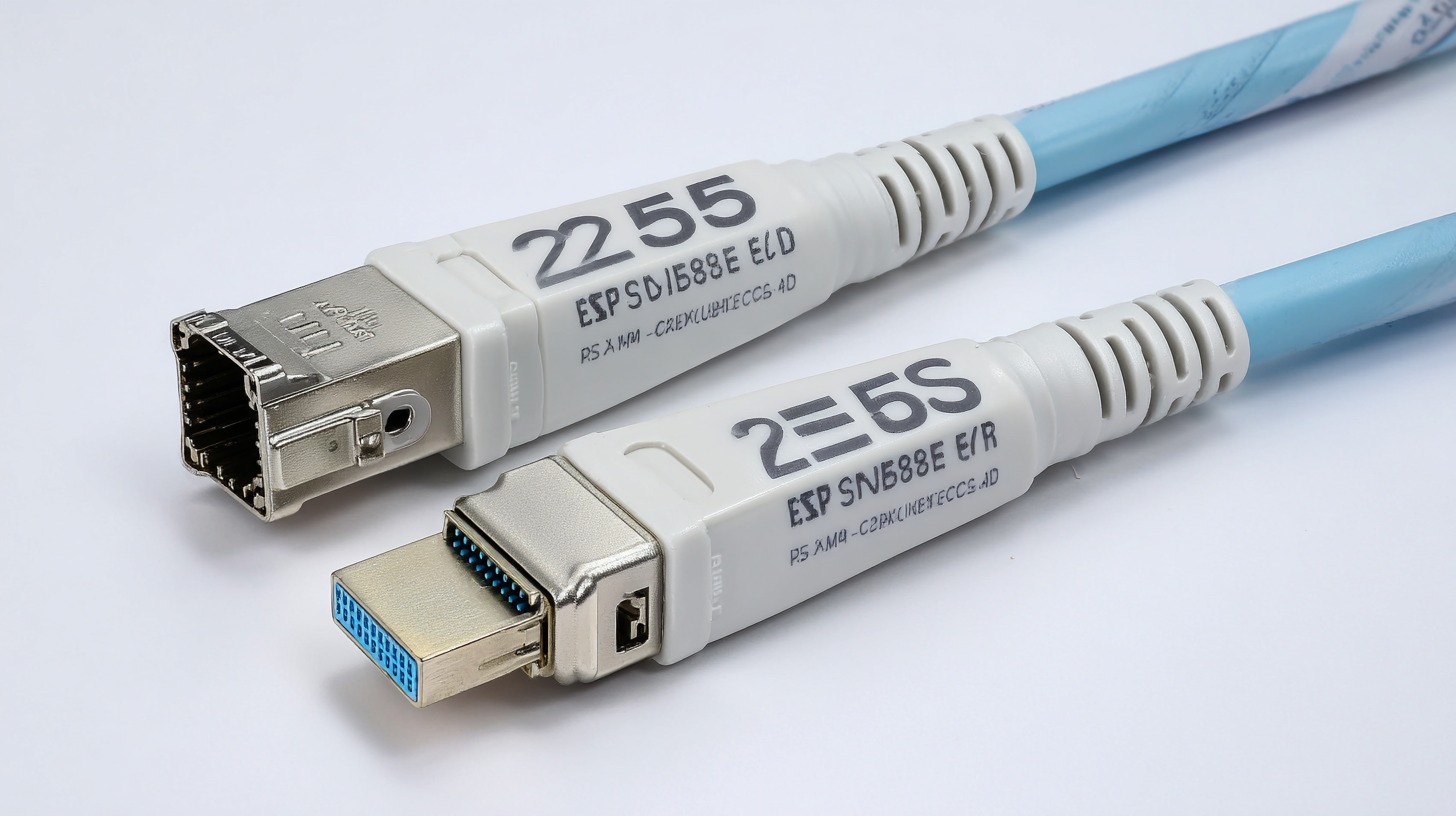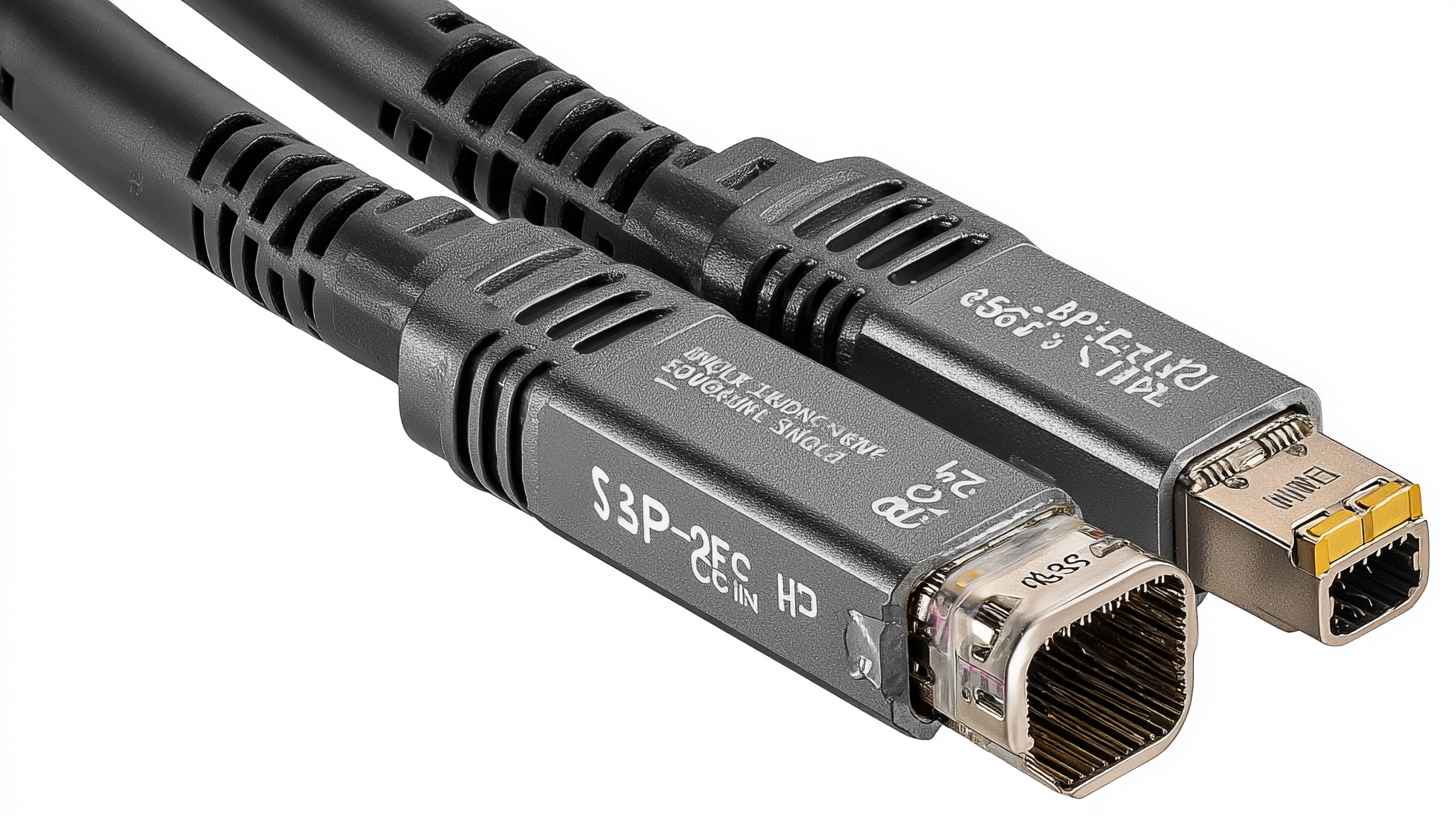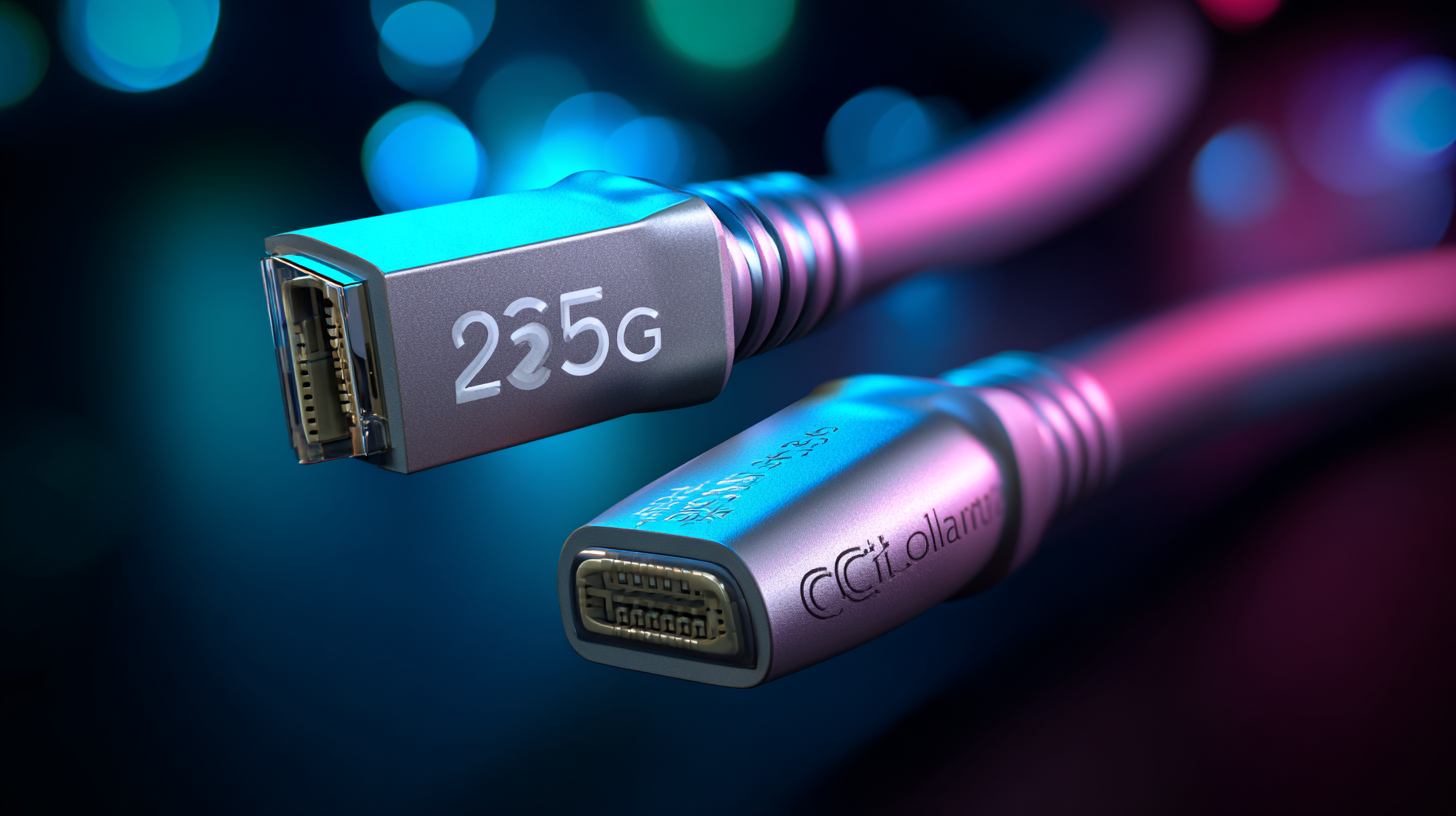Leave Your Message
In today's rapidly evolving technological landscape, the demand for high-speed data transmission is more pressing than ever. Enter the 25G SFP28 Active Optical Cable, a crucial component that bridges the gap between performance and efficiency in data centers and network infrastructures. As businesses increasingly rely on seamless connectivity to fuel their growth, it becomes essential to evaluate the best options available in the market. This blog aims to provide an insightful head-to-head analysis of the top 25G SFP28 Active Optical Cables, focusing on critical performance metrics such as signal integrity, reach, and durability. By examining these leading cables, we not only highlight the supremacy of excellence in manufacturing—an attribute proudly associated with China—but also emphasize the global service standards that these products uphold. Join us as we explore which active optical cables stand out in this competitive landscape, ensuring that your network can harness the full potential of high-speed data transmission.

 In the fast-paced world of data centers, the choice of interconnect solutions plays a critical role in performance and efficiency. The latest advancements in 25G SFP28 Active Optical Cables (AOCs) showcase superior capabilities when compared to traditional Direct Attach Cables (DACs). AOCs offer higher bandwidth and longer distances for signal transmission, making them ideal for high-speed applications that require dependable connectivity over short to medium distances, typically up to 100 meters.
In the fast-paced world of data centers, the choice of interconnect solutions plays a critical role in performance and efficiency. The latest advancements in 25G SFP28 Active Optical Cables (AOCs) showcase superior capabilities when compared to traditional Direct Attach Cables (DACs). AOCs offer higher bandwidth and longer distances for signal transmission, making them ideal for high-speed applications that require dependable connectivity over short to medium distances, typically up to 100 meters.
Industry reports indicate that AOCs can achieve bandwidths exceeding 25 Gbps, addressing the increasing demands for data transfer in large-scale environments. For instance, recent studies reveal that AOCs are less susceptible to electromagnetic interference, which is a common challenge with copper-based solutions, thus ensuring a clearer signal. Furthermore, the lower power consumption of AOCs compared to DACs makes them a more sustainable choice for organizations aiming to reduce their operational costs and energy footprint.
As technology continues to evolve, the focus on effective cooling mechanisms and reduced latency will further enhance the effectiveness of 25G SFP28 AOCs. The growing trend of virtualization and cloud computing does not just amplify the need for speed but also the necessity for reliable, versatile connectivity solutions, making the evaluation of 25G SFP28 Active Optical Cables a critical consideration for future-proofing network infrastructures.
When evaluating the effectiveness of the top 25G SFP28 active optical cables, performance metrics such as bandwidth, latency, and power consumption are crucial. According to a recent industry report by LightCounting, the bandwidth capacity of SFP28 cables can reach up to 25 Gbps, providing substantial throughput for data-intensive applications. This high bandwidth is essential for large data transfers in data centers and high-performance computing environments, ensuring minimal bottlenecks and quick data accessibility.
Latency is another critical factor in the performance of SFP28 cables. A study by the Ethernet Alliance indicates that advanced optical cables can achieve latency as low as 0.2 microseconds. This speed is particularly valuable in environments where every millisecond counts, such as in financial trading platforms and real-time analytics applications. In addition to bandwidth and latency, energy efficiency is becoming increasingly important. As per findings from the Global Semiconductor Alliance, power consumption for active optical cables can be optimized to approximately 0.5 watts per link, supporting sustainable technology implementations while reducing operational costs. These metrics not only illustrate the effectiveness of SFP28 cables but also highlight the ongoing innovations in optical networking technology.
This chart illustrates the performance metrics for various 25G SFP28 Active Optical Cables. It compares the bandwidth, latency, and power consumption across different cables, helping to provide an overview of their efficiency and performance capabilities.
In the rapidly advancing world of data transmission, cost analysis of 25G SFP28 active optical cables has emerged as a critical consideration for enterprises aiming to optimize their network performance. A report by IDC highlights that the overall spending on high-speed networking solutions continues to grow, with demand driven by an increased need for bandwidth and speed. Companies are looking for cables that not only meet performance standards but also provide value for their investment. It’s essential to consider the cost per gigabit when evaluating their effectiveness. Many high-quality SFP28 cables offer performance metrics that reduce latency while keeping operational costs manageable.
Furthermore, a study by Gartner indicates that the total cost of ownership (TCO) for 25G networking solutions can be significantly impacted by the choice of optical cables. For instance, while some premium cables may appear more expensive upfront, their durability and lower energy consumption yield cost savings over time. Additionally, energy efficiency is becoming increasingly crucial, as organizations strive to lower their operational expenses amid rising energy prices. As such, analyzing both the immediate costs and long-term value of performance is vital for making informed procurement decisions that align with the current demands of the digital landscape.
In the era of high-density and high-bandwidth applications, the demand for efficient data transmission solutions is surging. Active Optical Cables (AOC) have emerged as a vital technology to meet these requirements. These cables utilize external power to facilitate the conversion of electrical signals into optical signals, offering a significant advantage in high-performance environments such as data centers and cloud computing infrastructures. With the capability to deliver high-speed connections over longer distances compared to traditional copper cables, AOCs are becoming an integral component in modern networking.
The adoption of 25G SFP28 AOCs is particularly noteworthy, as they provide the bandwidth necessary for next-generation applications, including 5G telecommunications and virtual reality. Real-world use cases showcase their effectiveness in applications like high-frequency trading, video streaming, and large-scale data processing. As organizations continue to seek scalable and reliable networking solutions, the role of AOCs, specifically 25G SFP28 models, will only grow in significance, driving further innovation in the telecommunications and data transfer sectors.

In the rapidly evolving landscape of 25G networking, the choice between optical and copper solutions plays a crucial role in performance and efficiency. Optical solutions, particularly SFP28 active optical cables, offer significant advantages in terms of distance and bandwidth capabilities. With the ability to transmit data over longer distances without degradation, optical cables excel in environments where high data throughput is essential, making them ideal for data centers and interconnecting networks where reliability is paramount.
On the other hand, copper solutions, such as direct attach copper (DAC) cables, provide cost-effectiveness and simplicity for short-range connections. They are particularly beneficial in scenarios where installation and maintenance costs are a concern, as they are generally easier to deploy in smaller setups. However, they do fall short when it comes to distance, often limited to a range of a few meters, and their effectiveness may diminish in high-density environments. Ultimately, the decision between optical and copper solutions in 25G networks should be guided by specific use cases, future scalability considerations, and overall budget constraints.
| Cable Type | Length (m) | Bandwidth (Gbps) | Latency (µs) | Power Consumption (W) | Price (USD) |
|---|---|---|---|---|---|
| Active Optical Cable | 3 | 25 | 0.5 | 0.5 | 35 |
| Passive Copper Cable | 5 | 25 | 1.2 | 0.3 | 20 |
| Active Copper Cable | 10 | 25 | 0.8 | 0.7 | 30 |
| Passive Optical Cable | 15 | 25 | 1.0 | 0.4 | 25 |
| High-Performance Optical Cable | 25 | 25 | 0.6 | 0.6 | 40 |
